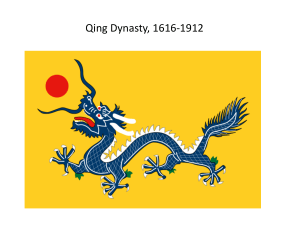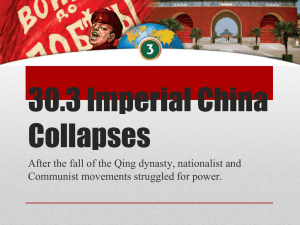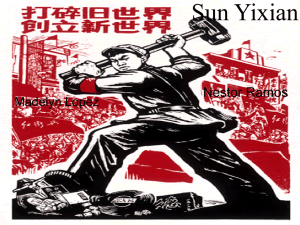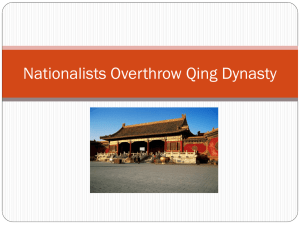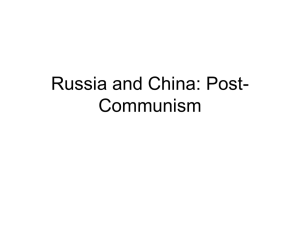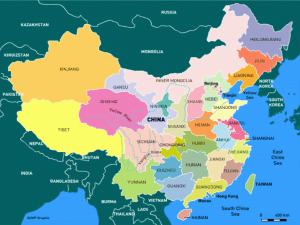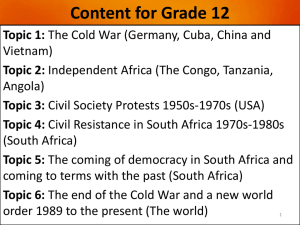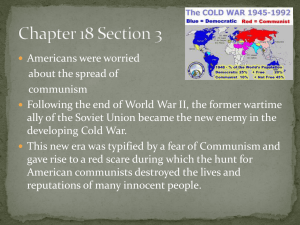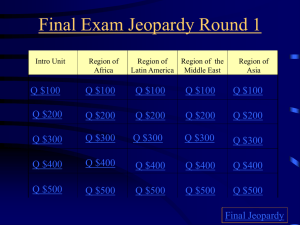Chinese Civil War Presentation
advertisement
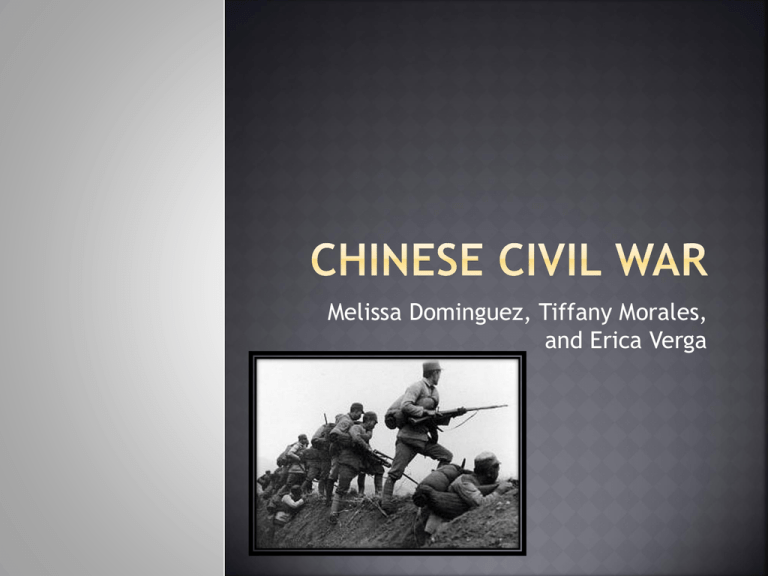
Melissa Dominguez, Tiffany Morales, and Erica Verga The Chinese Civil War (1927-37,1946-49), was a civil war fought between Kuomintang also known as the KMT or Chinese Nationalist Party, who were the governing party of the Republic of China, and the Communist Party of China, also known as the CPC, over the control of China. The Chinese Nationalist Party were backed by the United States and the United Kingdom, and they had the support of the richer people and the Chinese who lived in cities. The Communist Party of China were backed by the Soviet Union, and they had the support of many poor people. Long Term Causes Short Term Causes Immediate Cause 1) Struggle for power since 1927 between Nationalists and Communists 1) Divided country The Nationalist Party, also known as the Kuomintang, lead by General Chiang Kaishek, purged the Communists and party leftists from the Kuomintang and Chinese Communist Party alliance. 2) Chiang Kai-shek (Nationalist Party) had tried to eradicate members of CPC 2) Revolutionary spirit 3) Japanese War unite CPC and KMT. However, Chiang Kai-shek couldn't accept Communists as his partners so he attack Communist forces in the south. 3) Poverty. Poverty affected several things such as agriculture, land, and food. Poverty, which greatly hit China during the early 1900's, lead people to thinking Communism was right choice of government. 4) Polarized society Economic Cause: The Nationalists suffered from a variety of internal weaknesses, including loss of its economically advanced territories to Japan, serious inflation, and deteriorating popular support. Lack of structure caused economic problems in China. Political Cause: Once Britain stopped selling Opium to China people, who for example were addicted to it, they became upset against the government of China for not buying more or trying to have Britain keep selling them this. Ideological Cause: Ideology played a crucial role in bringing about war as KMT and CCP essentially fought over who was going to unify China and solve its problems according to their respective ideology. September 6, 1945- September 9, 1945 It was fought between the communists and former nationalists. Lishi was an important transportation hub in Shanxi. In, 1945, the communist decided to take town by force after the local defenders, consisted of former nationalists, turned the Japanese puppet regime force who rejoined the nationalists after World War II, refused to surrender. Result: Communist victory April 26, 1945- April 27 1945 It was a battle fought at the Yin Village. This conflict rooted from the fact that Chiang Kai-shek had realized that his nationalist regime simply had neither the sufficient troops nor enough transportation assets to deploy his troops into the Japaneseoccupied regions of China. Result: Communist victory. As a result of this battle, most members of the Japanese puppet regimes and their military forces rejoined the nationalists. October 10, 1946- October 20, 1946 It was fought between the Kuomintang (KMT or Chinese Nationalist Party) and the Communist Party of China (CPC) General Fu Zuoyi attacked the city of Kalgan. It was a nationalist victory. Of the 150,000 inhabitants, 50,000 fled with the remnants of the Communist armies. The retreating Communist army demolished or set fire to parts of the city. September 16th- September 24, 1948. It was fought between the Kuomintang (KMT or Chinese Nationalist Party) and the Communist Party of China (CPC) The communist Eastern China Field Army besieged and finally captured the city of Jinan, the capital of Shandong Province and a major urban center as well as a transportation hub in northeastern China with a population of about 600,000 at the time of the battle. The result was a communist victory. Economic Impact: One economic impact was the inflation caused by the war because so much money was needed to battle in this war. This also led to food shortages and people starving. Although the Chinese Civil War (1927-1949) caused enormous suffering throughout the twentieth century, for women, the rise of communism resulted in a significant improvement in their social status. According to communist doctrine, all workers were supposed to be accorded equal worth, regardless of their gender. With the collectivization of property, women were no longer at a disadvantage compared with their husbands. Of course, women from the property-owning class in China suffered humiliation and the loss of their status, just as their fathers and husbands did. However, the vast majority of Chinese women were peasants - and they gained social status, at least, if not material prosperity, in post revolutionary- Communist China . Nanchang Uprising- The Aug. 1 Nanchang Uprising, was an armed resistance led by the Chinese Communist forces on Aug. 1, 1927 in Nanchang, Jiangxi province, in order to counter the anti-communist purges by the Kuomintang (KMT, or Nationalist Party of China). The first shots of the armed resistance against the Kuomintang reactionaries were fired by the CPC and the left-wing KMT, lifting the curtain for CPC on independently leading the armed struggle and creating the revolutionary army. Shanghai massacre of 1927- Chinese civil war began with the Shanghai Massacre (April 12). Kuomintang army forces led by Chiang Kai-shek attacked their Communist allies in Shanghai and several other cities, executing 5,000 to 6,000 of those captured. 1. The result of the Chinese Civil War was that the Chinese Nationalist Party (KMT or Guo Min Dang) lost its support of the Chinese people, and lost the military conflict to the Chinese Communist Party (CCP). China was liberated from the anti-democratic dictatorship of Chiang Kai-shek and the Nationalists. 2. The founding of the People's Republic of China on October 1st, 1949. The leadership of Mao and the Chinese Communist Party and 50 more years of very troubled history. The transfer of the Nationalists to Formosa, then changed to the 'Republic of China' and now named Taiwan. 3. The question of the unification or the independence of Taiwan as a province of China or as a nation. To this day, since no armistice or peace treaty has ever been signed. Economic Result: One economic effect was the Communist's destruction of railways, dams, canals and other forms of transportation. This effected the Nationalist's chance of winning the war because they had less control over getting the supplies. This also led to the Communist's formation of the liberation areas which also put more problems on the Nationalists and there chance of winning. The economy became worse after the Chinese Civil War was over. http://www.youtube.com/watch?v=1TOP331 6JXY
